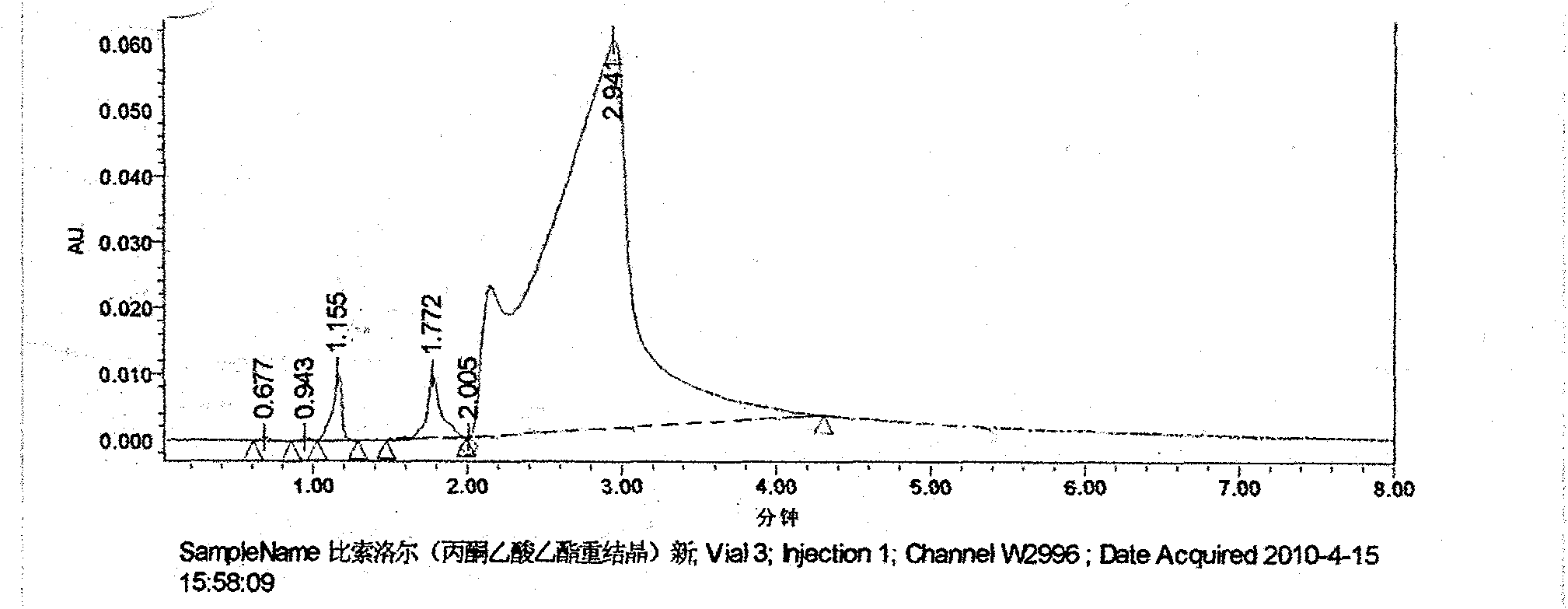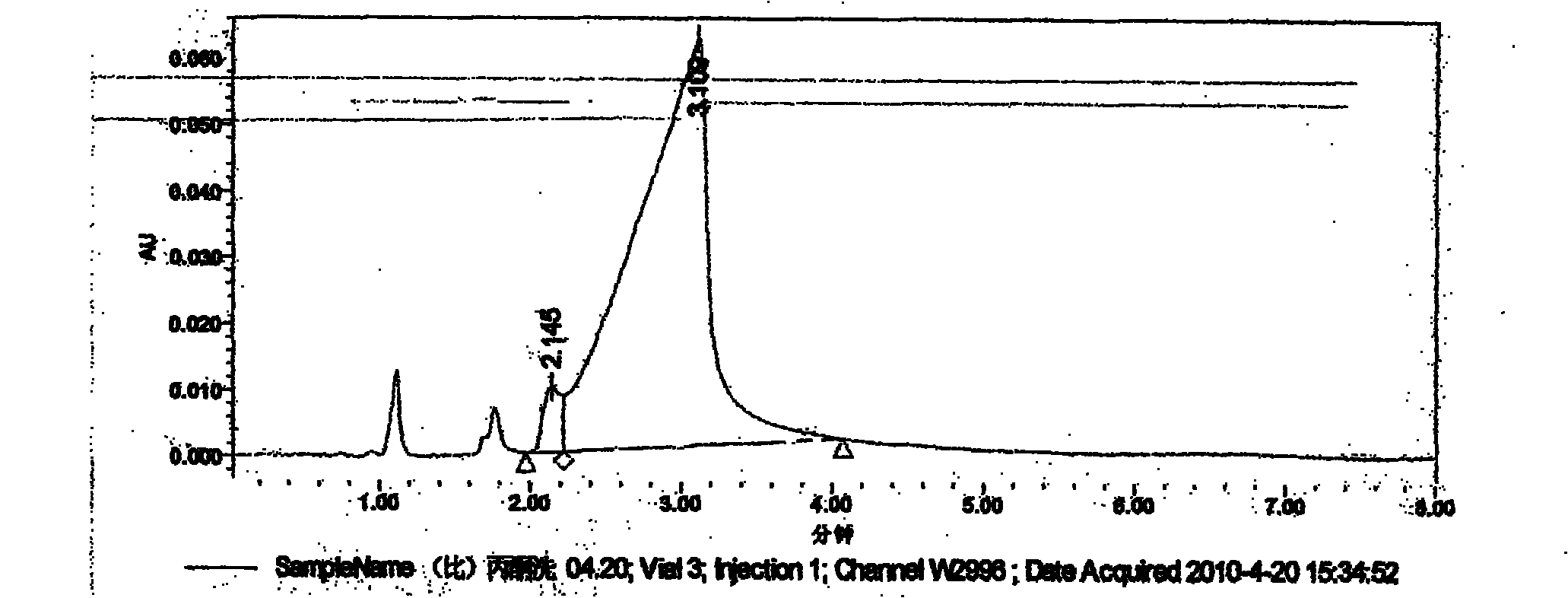Synthesis technology of bisoprolol
A synthesis process, the technology of bisoprolol, is applied in the field of industrialization of high-purity bisoprolol synthesis process, and can solve the problems of high reaction temperature requirements, low yield, low product purity, etc.
- Summary
- Abstract
- Description
- Claims
- Application Information
AI Technical Summary
Problems solved by technology
Method used
Image
Examples
Embodiment 1
[0021] (1) Alcohol hydroxyl etherification
[0022] Add 6L of isopropoxyethanol into a 10L reaction kettle, lower it to 0°C, add 600g of macroporous strongly acidic styrene-based cation exchange resin D001 type catalyst, add 700g of 4-hydroxybenzyl alcohol in batches, and react at 0°C for 2 hours, Then the temperature was raised to 30°C, and the reaction was continued for 5h. Filtration (recovering the resin), alkalinizing the filtrate with a small amount of potassium carbonate, distilling under reduced pressure (recovering excess 4-hydroxybenzyl alcohol), dissolving the residue in 4L toluene, washing twice with distilled water, and directly using it for the next reaction .
[0023] (2) Etherification of phenolic hydroxyl groups
[0024] Add 220g of sodium hydroxide aqueous solution (that is, the aqueous solution prepared by adding 220g of sodium hydroxide to 1000g of water) to the toluene solution obtained in the previous step reaction, add 2600g of epichlorohydrin, react a...
Embodiment 2
[0030] (1) Alcohol hydroxyl etherification
[0031] Add 8L of isopropoxyethanol into a 10L reaction kettle, lower it to 0°C, add 800g of macroporous strongly acidic styrene-based cation exchange resin D001-CC type catalyst, add 800g of 4-hydroxybenzyl alcohol in batches, and react at 0°C 2h, then the temperature was raised to 30°C, and the reaction was continued for 5h. Filtration (recovering the resin), alkalinizing the filtrate with a small amount of potassium carbonate, distilling under reduced pressure (recovering excess 4-hydroxybenzyl alcohol), dissolving the residue in 4L toluene, washing twice with distilled water, and directly using it for the next reaction .
[0032] (2) Etherification of phenolic hydroxyl groups
[0033] Add 220g of sodium hydroxide aqueous solution (that is, the aqueous solution prepared by adding 220g of sodium hydroxide to 1000g of water) to the toluene solution obtained in the previous step reaction, add 3000g of epichlorohydrin, react at 65°C...
Embodiment 3
[0039] (1) Alcohol hydroxyl etherification
[0040]Add 10L of isopropoxyethanol into a 10L reaction kettle, lower to 0°C, add 750g of macroporous strongly acidic styrene-based cation exchange resin D61 type catalyst, add 750g of 4-hydroxybenzyl alcohol in batches, and react at 0°C for 2 hours, Then the temperature was raised to 30°C, and the reaction was continued for 5h. Filtration (recovering the resin), alkalinizing the filtrate with a small amount of potassium carbonate, distilling under reduced pressure (recovering excess 4-hydroxybenzyl alcohol), dissolving the residue in 4L toluene, washing twice with distilled water, and directly using it for the next reaction .
[0041] (2) Etherification of phenolic hydroxyl groups
[0042] Add 220g of sodium hydroxide aqueous solution (that is, add 220g of sodium hydroxide to 1000g of water to prepare the aqueous solution) to the toluene solution obtained in the previous step reaction, add 2000g of epichlorohydrin, react at 65°C f...
PUM
 Login to View More
Login to View More Abstract
Description
Claims
Application Information
 Login to View More
Login to View More - R&D
- Intellectual Property
- Life Sciences
- Materials
- Tech Scout
- Unparalleled Data Quality
- Higher Quality Content
- 60% Fewer Hallucinations
Browse by: Latest US Patents, China's latest patents, Technical Efficacy Thesaurus, Application Domain, Technology Topic, Popular Technical Reports.
© 2025 PatSnap. All rights reserved.Legal|Privacy policy|Modern Slavery Act Transparency Statement|Sitemap|About US| Contact US: help@patsnap.com



